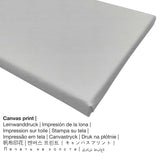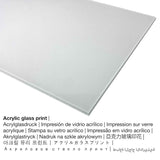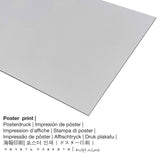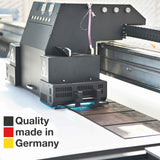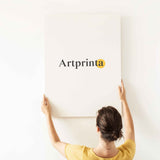Albert Pinkham Ryder, 1880 - The SmugglersCove - ọmarịcha nka
Ụtụ gụnyere. Mbupu gbakọrọ na ndenye ọpụpụ.
Summary of the art replica "The SmugglersCove"
In 1880 the painter Albert Pinkham Ryder created the masterpiece The SmugglersCove. The 140 year old original of the masterpiece had the size: 10 1/8 x 27 3/4 na (25,7 x 70,5 cm). Oil on gilt leather was applied by the artist as the technique for the artpiece. Nowadays, this piece of art can be viewed in in the digital art collection of The Metropolitan Museum of Art, which is located in New York City, New York, Njikota Obodo Amerika. The masterpiece, which belongs to the public domain is supplied with courtesy of The Metropolitan Museum of Art, New York, Rogers Fund, 1909. Moreover, the artwork has the following creditline: Rogers Fund, 1909. What is more, the alignment of the digital reproduction is odida obodo na oke nke 3: 1, nke pụtara na ogologo ahụ dị okpukpu atọ karịa obosara. The artist, painter Albert Pinkham Ryder was an artist, whose style was primarily Symbolism. The Symbolist painter lived for a total of 70 afọ - born in the year 1847 in New Bedford, Bristol county, Massachusetts, United States and passed away in the year 1917.
Họrọ ihe ị ga-edobere n'ụlọ gị
Maka ngwaahịa ọ bụla anyị na-enye ụdị nha na ihe dị iche iche. Anyị na-ahapụ gị ka ịhọrọ n'ime ụdị ndị a:
- Mpempe iko acrylic na-egbuke egbuke: The acrylic glass print, which is sometimes referenced as a UV print on plexiglass, will transform your selected artwork into great décor and offers a viable alternative to dibond or canvas fine art replicas. With a glossy acrylic glass art print sharp contrasts as well as granular details become more identifiable because of the precise tonal gradation in the picture. The acrylic glass protects your custom art replica against light and heat for many years to come.
- Aluminom dibond mbipụta (ọla): This is a metal print made on aluminium dibond with an outstanding depth. Its non-reflective surface make a modern impression. A direct Direct Print on Aluminum Dibond is your excellent start to fine art replicas produced on aluminum. Colors are bright and vivid, fine details of the print are clear and crisp, and there’s a matte look that you can literally feel. The print on Aluminum Dibond is the most popular entry-level product and is a modern way to showcase art, as it puts 100% of the viewer’s focus on the artwork.
- Bipụta akwụkwọ mmado n'ihe kwaaji: Our poster print is a printed cotton canvas with a slightly rough surface structure. The poster print is optimally used for placing the art copy with a personal frame. Please keep in mind, that depending on the absolute size of the canvas poster print we add a white margin of approximately 2 - 6cm around the print motif, which facilitates the framing with your custom frame.
- Kwaaji: A printed canvas material applied on a wooden stretcher frame. A canvas produces a unique effect of three dimensionality. How do I hang a canvas print on my wall? The advantage of canvas prints is that they are relatively low in weight, which implies that it is easy and straightforward to hang your Canvas print without the use of extra wall-mounts. That is why, canvas prints are suited for any type of wall.
Nkwupụta iwu: We try all that we can in order to depict the art products with as many details as possible and to showcase them visually on the various product detail pages. However, the pigments of the printing material, as well as the print result can diverge marginally from the representation on the device's monitor. Depending on the settings of your screen and the nature of the surface, colors might not be printed 100% realistically. Bearing in mind that all the fine art prints are printed and processed by hand, there might as well be slight differences in the size and exact position of the motif.
Ozi ederede ahaziri
| Nkewa edemede: | mmepụta nka |
| Mmeputakwa: | dijitalụ mmeputakwa |
| Usoro nhazi: | UV kpọmkwem obibi |
| Mmalite ngwaahịa: | arụpụtara na Germany |
| Stockdị ngwaahịa: | mmepụta ihe na-achọ |
| Ngwaahịa were: | mkpokọta nka (mmeputakwa), nka mgbidi |
| Nhazi: | nhazi odida obodo |
| Oke akụkụ onyonyo: | 3: 1 ogologo ruo obosara |
| Ihe: | ogologo ahụ dị okpukpu atọ karịa obosara |
| Ụdị dị iche iche dị: | acrylic glass print (nwere ezigbo mkpuchi iko), mbipụta akwụkwọ mmado (akwụkwọ kwaaji), mbipụta ọla (aluminium dibond), mbipụta akwụkwọ. |
| Kanvas n'elu etiti ihe ndọtị (mbipụta akwa akwa): | 60x20cm - 24x8", 90x30cm - 35x12", 120x40cm - 47x16" |
| Mbipụta iko acrylic (nke nwere ezigbo mkpuchi iko): | 60x20cm - 24x8", 90x30cm - 35x12", 120x40cm - 47x16" |
| Nhọrọ nke mbipụta akwụkwọ mmado (akwụkwọ kwaaji): | 90x30cm - 35x12", 120x40cm - 47x16" |
| Mpempe akwụkwọ Dibony (ihe alumnium) nha dị iche iche: | 30x10cm - 12x4", 60x20cm - 24x8", 90x30cm - 35x12", 120x40cm - 47x16" |
| Nhazi nke nka nka: | agunyeghi |
Nkọwa gbasara nka nka mbụ
| Aha nka: | "The SmugglersCove" |
| Nhazi nka nka: | sere |
| Okwu mkpokọta: | nkà nke oge a |
| Narị afọ nka: | 19th narị afọ |
| Afọ nka: | 1880 |
| Ogologo afọ nka nka: | ihe karịrị 140 afọ |
| Usoro nka izizi: | oil on gilt leather |
| Akụkụ nke ọrụ nka mbụ: | 10 1/8 x 27 3/4 na (25,7 x 70,5 cm) |
| Ụlọ ihe ngosi nka: | Museumlọ ihe ngosi nka nke Obodo |
| Ebe ngosi nka: | New York City, New York, Njikota Obodo Amerika |
| Webụsaịtị ihe ngosi nka: | Museumlọ ihe ngosi nka nke Obodo |
| Akwụkwọ ikike nka: | ngalaba ọha |
| Site n'aka: | Ụlọ ihe ngosi nka nke Metropolitan, New York, Rogers Fund, 1909 |
| Ebe kredit nke ọrụ nka: | Rogers Fund, 1909 |
Tebụl ozi omenkà
| aha: | Albert Pinkham Ryder |
| Aha ndị ọzọ: | ryder a.p., Ryder Albert P., ryder a.p., Albert Pinkham Ryder, a.p. ryder, Ryder, ryder albert, Ryder Albert Pinkham, albert ryder |
| okike nke onye nka: | nwoke |
| Nationality: | American |
| Ọrụ nke onye na-ese ihe: | onye na-ese ihe, omenkà |
| Obodo onye nka: | United States |
| Nkewa onye nka: | omenkà nke oge a |
| styles: | Akara |
| Oge ndu: | 70 afọ |
| Amụrụ n'afọ: | 1847 |
| Amụrụ na (ebe): | New Bedford, Bristol County, Massachusetts, Njikota Obodo Amerika |
| Nwuru: | 1917 |
| Ebe ọnwụ: | Elmhurst, New York City, New York steeti, United States, agbataobi |
Nwebiisinka © | Artprinta.com
What does the website of the The Metropolitan Museum of Art say about this 19th century work of art from the artist and painter Albert Pinkham Ryder? (© - The Metropolitan Museum of Art - Museumlọ ihe ngosi nka nke Obodo)
This shore scene, painted on gilded leather, may have been done as a decorative commission, presumably early in the artist's career. The romantic subject matter and interest in the sea are typical of Ryder throughout his career. What is more unusual for him is the very thin paint application and the decisive brushwork. Beneath the pigment is a layer of gilt that enhances the texture and gives the painting its warm golden tone. The simplified forms of the houses anticipate modernist works of later American artists such as Charles Burchfield.


